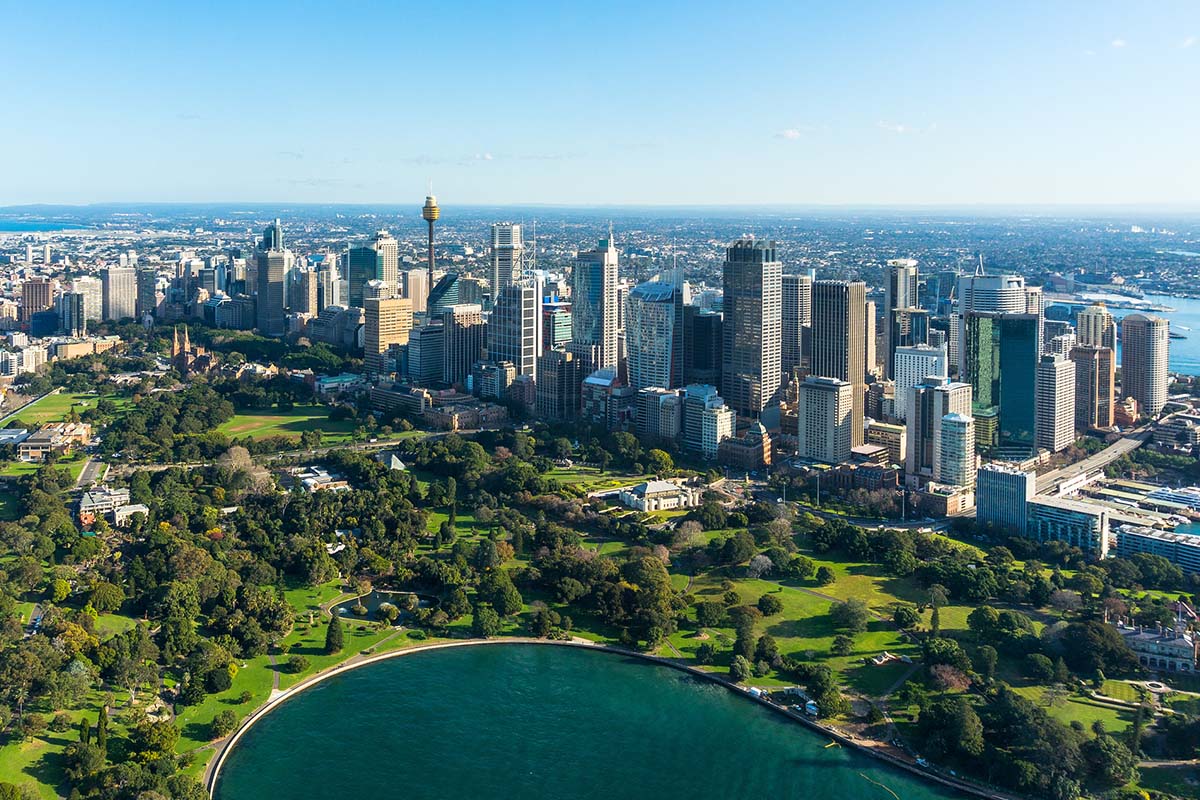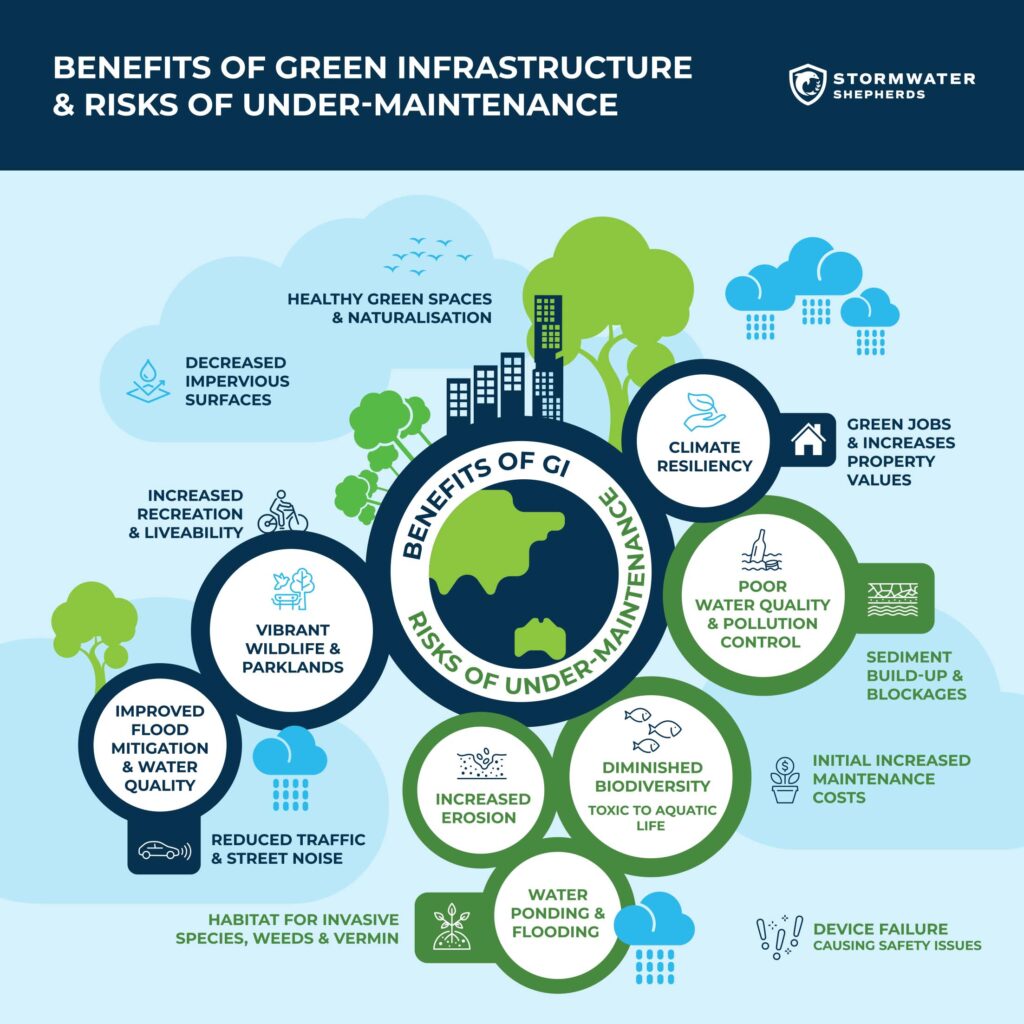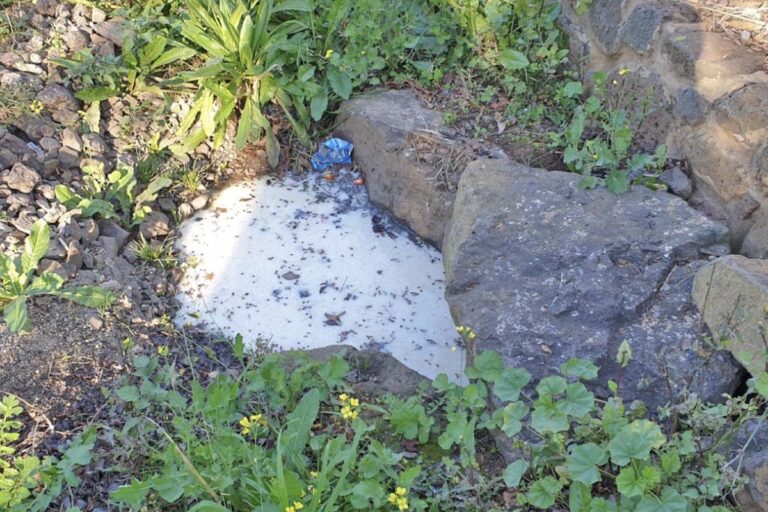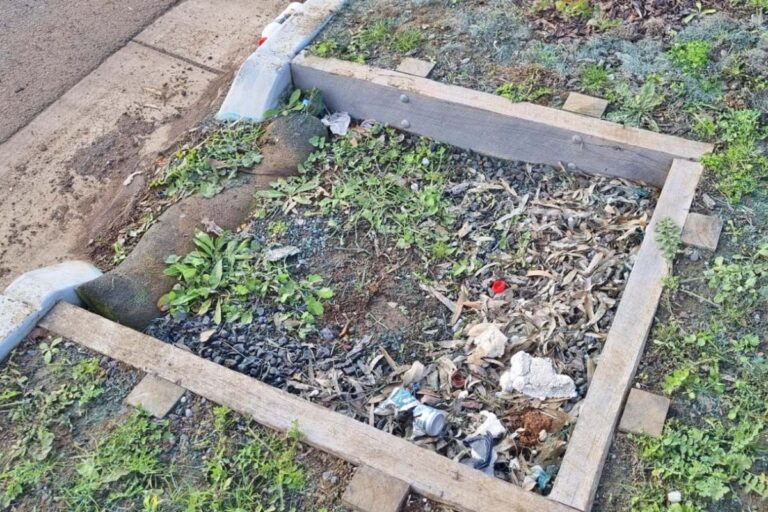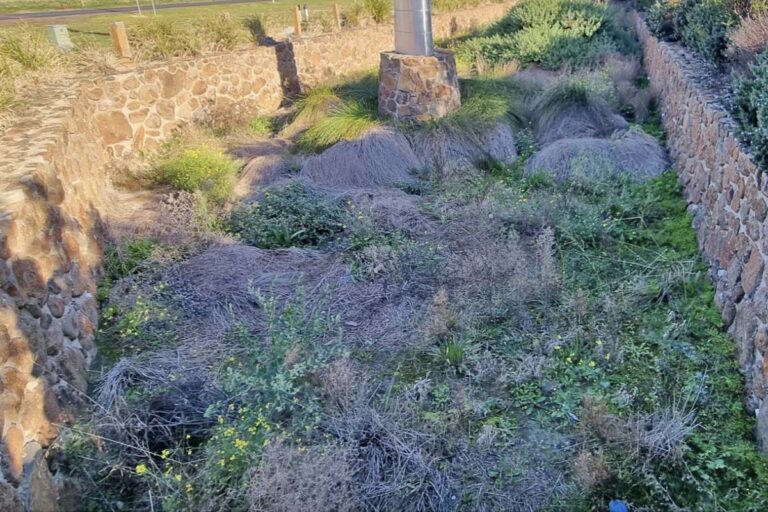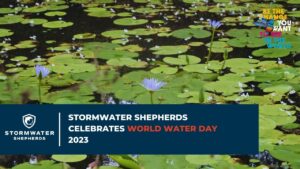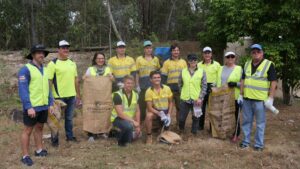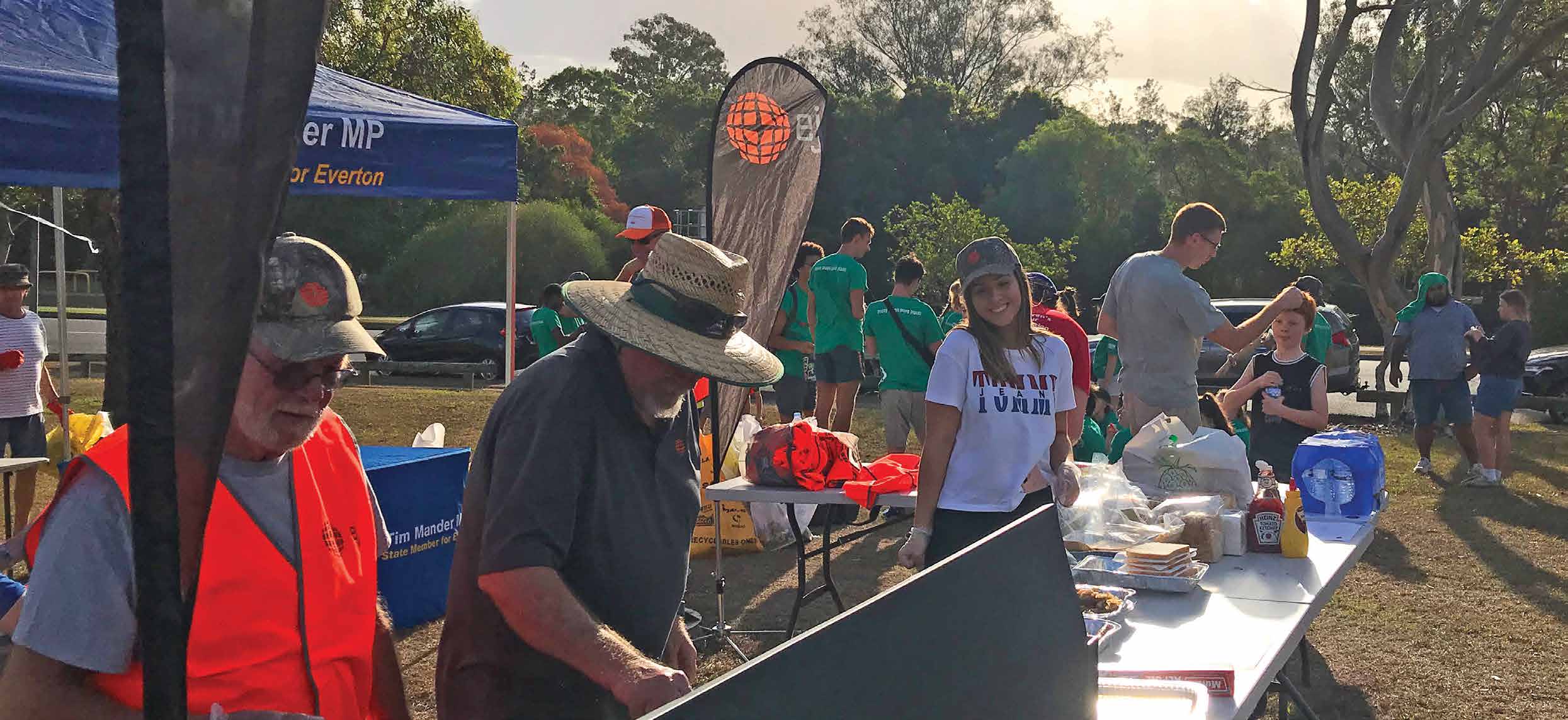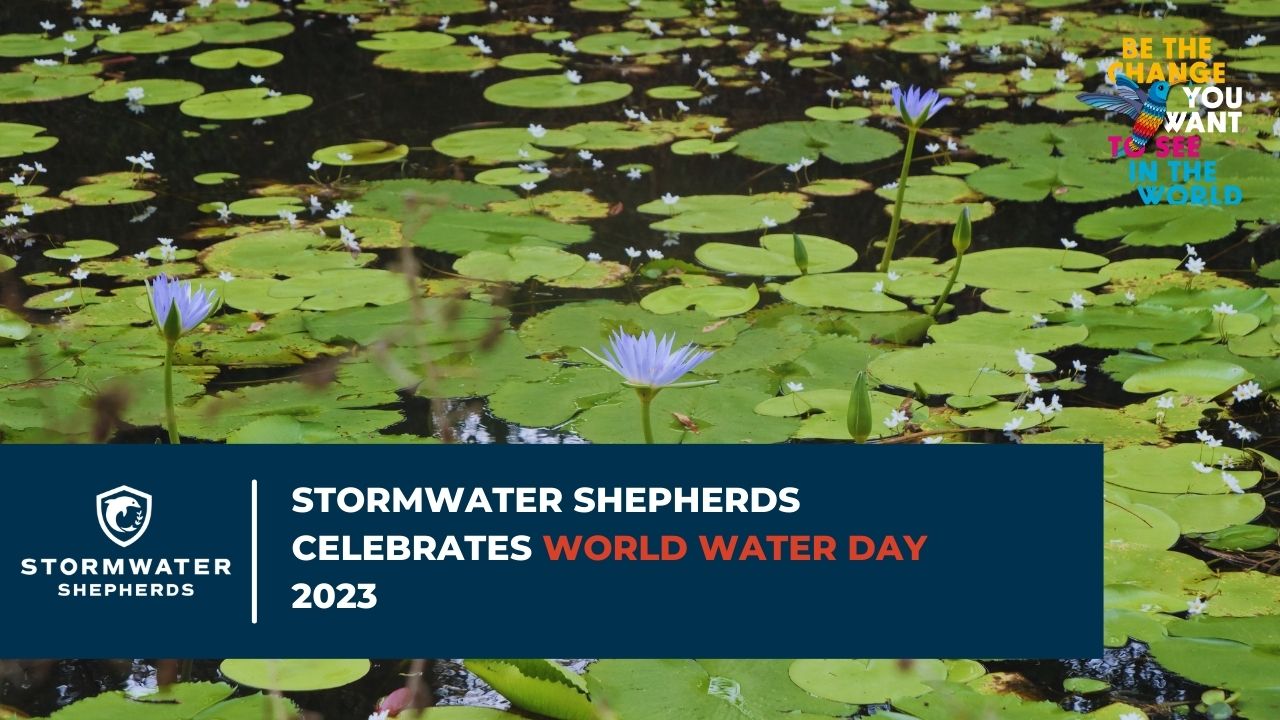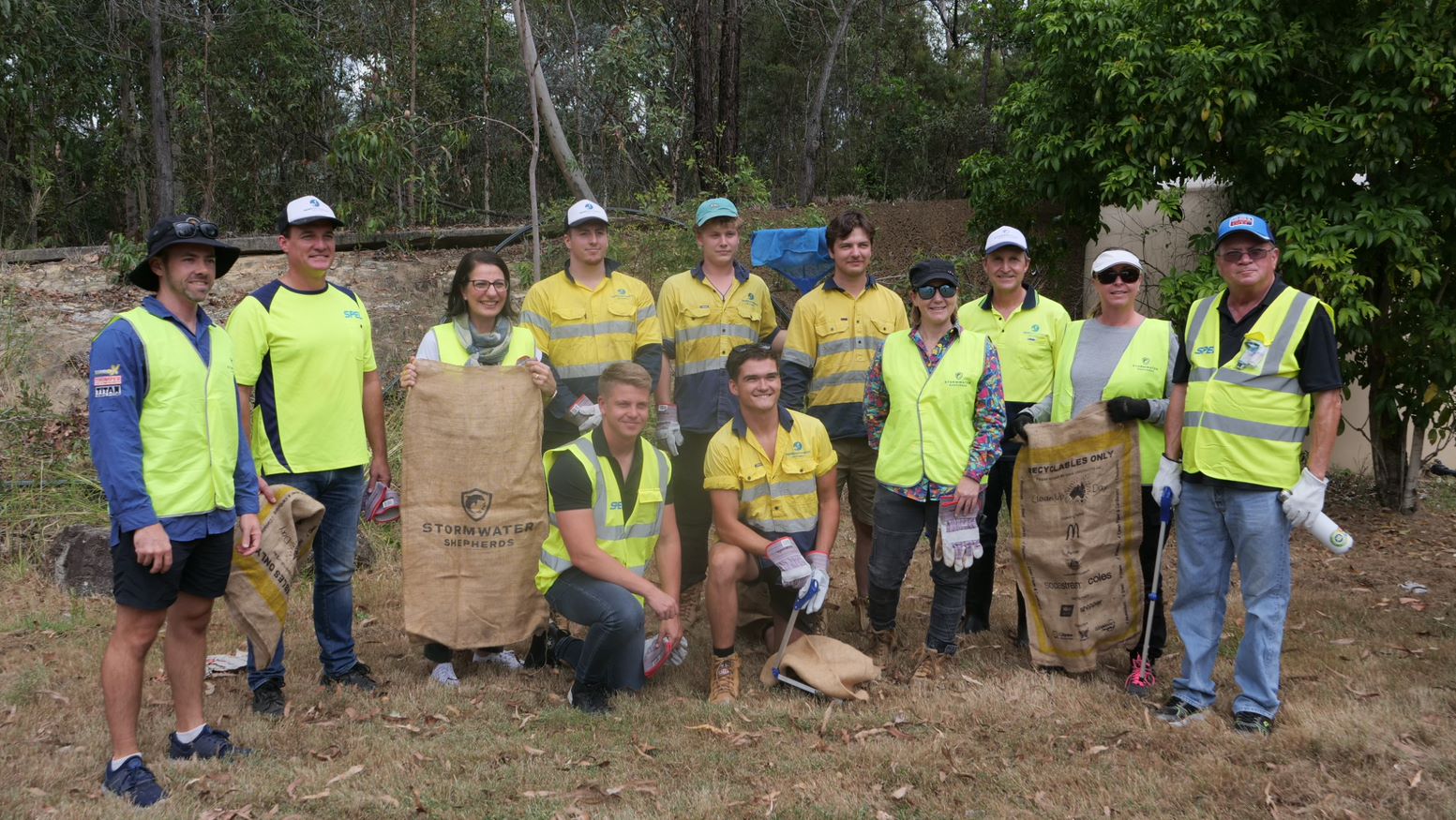With most Australians living in our urban centres, our need for stormwater infrastructure is growing. Green infrastructure (GI) plays an important part in modern urban development and provides naturalized approaches to treating stormwater.
As we futureproof our cities, green infrastructure adoption is increasing. In other words, modern cities are building in naturalized spaces to reduce flooding, improve public amenities, harvest treated water for re-use and increase social liveability.
Green infrastructure imitates, preserves, and rehabilitates the natural water cycle to absorb and filter rainwater and stormwater. Parklands, bioswales, green streets and alleys, urban tree canopies, rain gardens, green roofs, bio detention and retention basins, and wetlands are examples of these modern designs.
Together, these green systems create blue-green corridors that flood proof our towns and cities, increase biodiversity, and keep them safer and cooler.
Green Infrastructure: A Modern Solution for Urban Design
Green infrastructure is a modern way of implementing stormwater systems that meet key criteria for sustainability, resilience, and eco-friendly design philosophies, while also maintaining vibrant green spaces for our communities to share.
The benefits are rich and improve social, environmental, ecological, and economic gains. Our communities benefit from increased green spaces, which create recreation and tourism. They also help local businesses that need access to these vital environmentally friendly areas.
Green infrastructure infographic: Benefits of GI & Risks of Under-maintenance
Green Infrastructure Risks: Undermaintained Assets & Device Failure
All stormwater devices require maintenance, and green infrastructure poses some unique problems when it comes to keeping them functioning efficiently.
In ideal circumstances, green infrastructure is visually appealing public infrastructure that can provide habitat for wildlife and help naturalize our cities. Wetlands, parklands, and bioretention areas can be beautiful, vibrant assets – they provide better water quality outcomes, prevent flooding, and ensure the availability of more green areas for wildlife.
But – are we maintaining these vital stormwater assets?
When green infrastructure is under-maintained, it often promotes the very conditions it is trying to solve – pollution, flooding, and untreated run-off. If these systems are neglected, they risk becoming toxic pools of pollution and waste.
Currently, many Australian councils lack operational budgets to fund their green infrastructure, and new assets are sometimes not added to a council’s assets register and usually left off maintenance schedules. Private landowners are often unaware of their duty to maintain their stormwater assets, and they build over them or refuse to pay for their maintenance – which is an issue for both green and grey stormwater infrastructure.
Maintenance ensures the performance of green infrastructure across its lifecycle – including reduced risk of premature decommission, and continued flood reduction and pollution removal. This protects the local environment and ensures communities can continue to enjoy the benefits of these green spaces into the future.
Can green and grey infrastructure work together?
The answer to this question is, most definitely, a yes. The installation of grey devices (manufactured) upstream supports the longevity of bio basins and wetlands in high pollution areas. Being cost-effective and easier to maintain while stopping high pollution loads of contaminated sediment and litter. Sadly, the is a hesitancy for councils and water utilities to incorporate grey with green.
How do we fund maintenance for green infrastructure?
So, how can we fund this maintenance? One answer is to generate funding to match the ever-growing need for green infrastructure. Stormwater utility charge models are one approach that allow local governments to raise funds.
Fair utility charges mean that residents, businesses, and owners of property pay for the areas of impervious surfaces on their property. This concept is known as ‘the more you pave, the more you pay’ and ensures that everyone contributes fairly to funding our vital stormwater assets.
Green infrastructure conveys many benefits to our urban areas and provides futureproofing and sustainable solutions to stormwater treatment.
These benefits are varied and include –
- Improving mental and physical health
- Increasing green businesses and jobs providing economic gains
- Improving air and water quality
- Increasing property values,
- Reducing household utility costs
- Reducing flooding
Many green infrastructure spaces can be designed for recreation and physical activity or can be integrated into parks and public areas. This promotes natural spaces in communities and helps promote a sense of well-being and health.
A blue-green corridor is a linked network of healthy suburbs using green infrastructure and wildlife habitats.
These green systems work together. Modern urban design philosophies often champion the connection of these greenspaces to create environments that incorporate sustainability, eco-friendly development, stormwater treatment and flood mitigation.
By interlinking these different projects across our cities, we can plan communities and urban growth that helps to future-proof our urban spaces. This is a crucial element of developing naturalized cityscapes that help to reduce the impacts of climate change and severe weather events. And increase biodiversity.
Bioswales are long, narrow green areas that help to channel stormwater into regions that allow it to be treated and slowed. These areas help improve water quality, and are a sustainable, green solution for stormwater conveyance.
Sediment is trapped in these systems with other pollutants before they can enter our drainage networks. Stormwater is filtered through vegetation that grows within the bioswale’s bioretention.
These bioretention elements play a crucial role in the health of these systems – slo
A green roof or ‘living roof’ has a layer of plants and vegetation, which allows greenspaces to exist on top of buildings in place of traditional roofs.
Growing vegetation on roofs helps reduce stormwater runoff, moderates heat, and reduces energy costs for cooling. These can be aesthetically designed with beautiful gardens that help to enhance our cities and provide naturalized environments.
Traditional roofs are impervious surfaces that increase the rates of stormwater runoff. In comparison, green roofs provide a future-proofed alternative that helps to make our cities more liveable, increases biodiversity, and provides treatment for better air and water quality outcomes.
A raingarden is a smaller version of a bio basin. These green designed gardens use special soils and sand to help slow and treat stormwater to improve water quality and prevent flooding.
Rain gardens filter sediment, nutrients, and capture rubbish and larger pieces of pollution before it enters our stormwater network. They are often located on curbs or near impervious surfaces such as driveways – and excess stormwater runoff. By slowing this water down, it helps to mitigate flooding and prevents this runoff from surging toward our water network.
Many rain gardens are designed and planted with native shrubs and flora. These improve biodiversity in the local area, and if well-maintained, provide habitat and great aesthetics. These gardens help to naturalize our urban areas, make our communities more liveable, and minimise the impacts of impervious areas in our cities.
Trees in cities soak up rainwater through their leaves and branches, provide cooling shade, and stifle traffic noise. These natural systems provide pervious spaces where water can soak or ‘infiltrate’ which allows biological and physical processes to remove pollutants from stormwater.
The infiltration of stormwater into the grounds slows down stormwater in our urban spaces. Reducing strain on our drainage network, this helps reduce peak flows and flooding.
The roots of trees and plants also help to draw in nutrients, pollutants and fine particles that would otherwise reach our drainage network and subsequent waterways. Ultimately, reaching our oceans.
A green street involves the design and implementation of various pieces of green infrastructure to treat stormwater along an urban street or laneway. By incorporating different types of green design – including bioretention, vegetation, rain gardens and basins – stormwater can be treated and slowed.
This helps improve water quality and prevents local flooding. Green streets can treat urban stormwater at the source – and remove pollutants, nutrients, and fine particles before they reach our waterways.
Green streets can also use modern technology such as permeable pavers to reduce the amounts of impervious surfaces in our urban streets.

